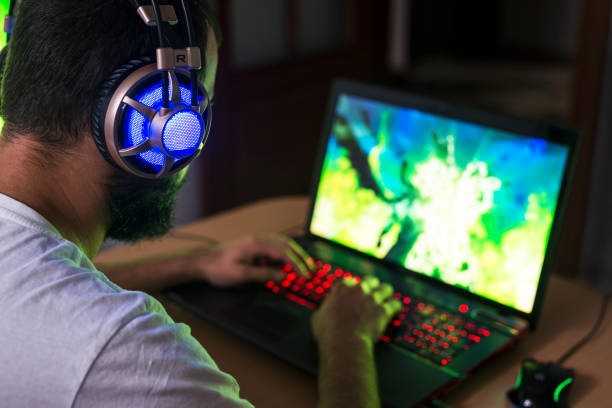What Are the Risks of Using a Forex Trading Robot?

The world of foreign exchange trading has evolved rapidly with the rise of automated systems, and one of the most talked-about tools is the forex trading robot. These programs promise traders the ability to trade automatically, without constant monitoring. However, while they can be powerful, they also come with risks that every trader should understand. Before you start using one, it’s important to weigh the potential benefits against the possible drawbacks—especially if you want to protect your capital and make the most out of your investments.
How Does a Forex Trading Robot Work?
A forex trading robot is a piece of software designed to execute trades on your behalf. It relies on pre-set algorithms and trading rules to determine when to buy or sell currency pairs. Many traders are drawn to them because they can operate 24/7, follow strategies without emotion, and potentially generate profits even while you sleep.
While the technology behind these robots is impressive, you should remember that they are only as good as the programming and strategy they are based on. If the logic behind the robot is flawed or outdated, your trades can quickly turn from profitable to unprofitable.
Can Over-Reliance on Automation Hurt Your Trading?
One of the biggest risks of using a forex trading robot is the temptation to rely entirely on automation. Many new traders believe that once they activate a robot, they can walk away and watch their account grow without effort. In reality, markets are unpredictable, and even the most sophisticated algorithms can’t predict every movement.
Economic news releases, sudden political events, or unexpected market sentiment changes can lead to sharp price fluctuations that a robot may not react to appropriately. When this happens, trades can close at a loss, and without manual intervention, losses can accumulate quickly.
Is There a Risk of Outdated Trading Strategies?
Forex markets are constantly changing. A strategy that worked well last year may no longer be effective today. This is where many traders run into trouble—they purchase a forex trading robot that was built using historical data but hasn’t been updated to reflect current market conditions.
If a robot is based on outdated patterns, it may enter trades that have a low probability of success. This risk is particularly high for beginners who don’t fully understand how the robot makes its decisions. To reduce this risk, traders should choose robots with ongoing developer support and regular updates.
What About Technical Failures and Glitches?
No matter how advanced the software, technical issues can and do happen. A forex trading robot can experience bugs, internet connection drops, or broker platform mismatches. These technical failures can cause delayed order execution, incorrect trade sizes, or missed opportunities.
For example, if your robot is programmed to close a trade when a certain profit level is reached but fails to execute due to a technical glitch, you could end up holding the trade until it turns into a loss. This is why traders should monitor their accounts regularly, even when using automation.
Are Scams and Fraudulent Robots a Real Concern?
Unfortunately, the popularity of automated trading has also led to a rise in scams. Many so-called “guaranteed profit” forex trading robots are nothing more than marketing gimmicks designed to lure inexperienced traders.
These fraudulent systems often come with fake backtest results, flashy websites, and unrealistic promises. Once you purchase them, you may find that they either lose money immediately or don’t work at all.
To avoid falling victim, always research thoroughly before buying. Look for independent reviews, verify backtest results, and avoid robots that promise “100% success rates.” In real trading, such guarantees simply don’t exist.
Can High Leverage Amplify Risks?
Forex trading often involves leverage, which can magnify both profits and losses. When you combine leverage with an automated trading strategy, you could be exposing yourself to significant risk. A forex trading robot can quickly open multiple positions, and if the market moves against you, the losses could exceed your initial investment.
Risk management settings—such as stop-loss orders—are essential when using a robot. Without them, your account could be wiped out during a single volatile market session.
How Do You Balance Risk and Reward?
While there are undeniable risks in using a forex trading robot, many traders still choose to use them as part of their overall strategy. The key is to treat automation as a tool, not a replacement for your judgment.
One smart approach is to start with a demo account before committing real money. This allows you to test the robot’s performance without financial risk. You can also combine automated trading with manual oversight to ensure your strategy adapts to changing conditions.
Additionally, using tools like the best forex cashback programs can help you recover some trading costs. Cashback programs give you a rebate on your trading volume, which can offset losses or increase net profits over time.
Why Risk Management Is Non-Negotiable
Whether you trade manually or with a forex trading robot, risk management is the foundation of long-term success. This means:
- Setting stop-loss and take-profit levels
- Limiting the percentage of capital risked per trade
- Diversifying currency pairs
- Avoiding trading during highly volatile news events unless your strategy is designed for it
By following these principles, you can significantly reduce the downside while still enjoying the convenience of automated trading.
Final Thoughts: Should You Use a Forex Trading Robot?
Using a forex trading robot can be an efficient way to trade, but it’s not without its dangers. Over-reliance, outdated strategies, technical glitches, scams, and leverage-related risks can all lead to losses if you’re not careful.
The best way to approach automated trading is with caution, constant monitoring, and realistic expectations. Remember, even the best forex cashback programs or advanced algorithms can’t eliminate risk entirely. Your knowledge, discipline, and ability to adapt remain your strongest assets in the forex market.
In the end, a forex robot should complement your trading strategy—not replace it. Treat it as an assistant, keep learning, and always stay in control of your financial decisions.



